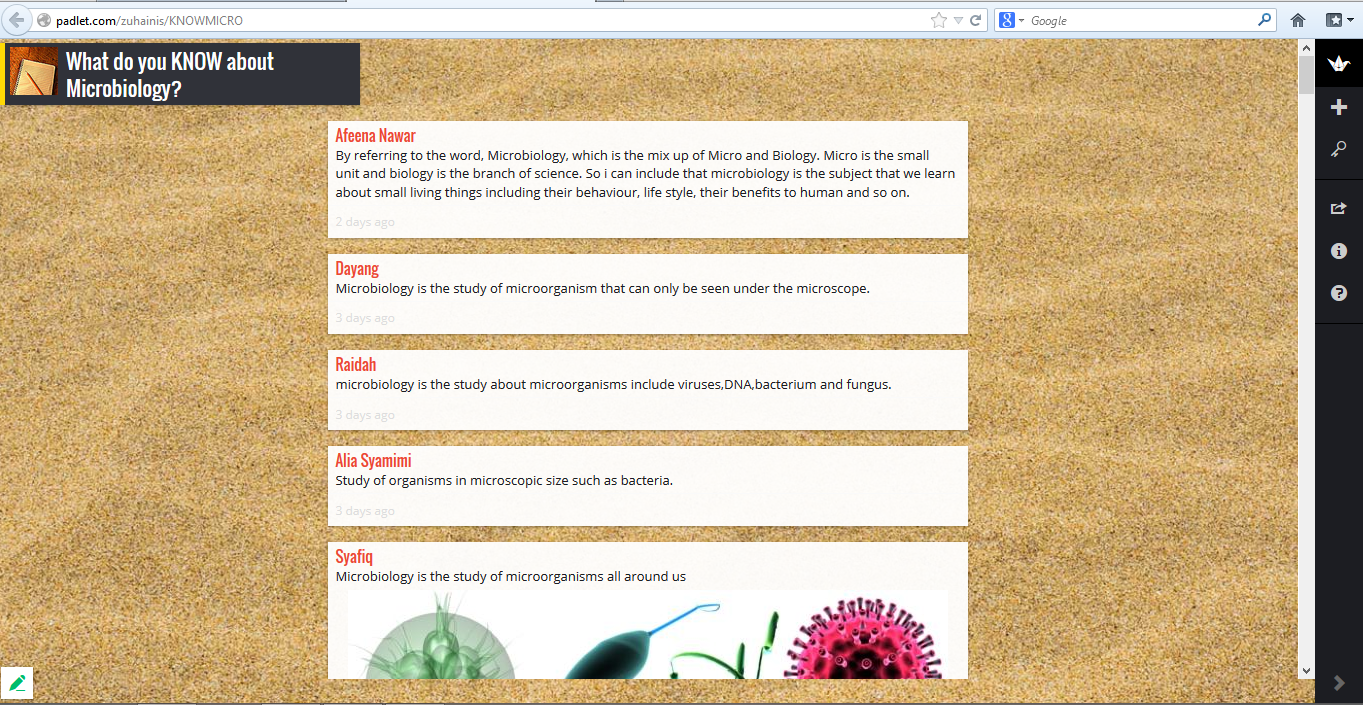From my previous post, I mentioned about mind map but I did not finish mine (individually) yet, so yesssss I am so excited to show it here :D
For the first time in my life, I feel like I am able to understand what I read based on my mind map made by myself. Therefore, I honestly think that this application introduced by Dr. Wan is so useful! And I'm surely going to use it for next topics too!
However, what we were discussing on that day was INTRODUCTION TO PROKARYOTES which only covered the external parts. The definition of prokaryotes is a group of organisms that lack a cell nucleus or any other membrane-bound organelles.
We learn about the size-shape relationship, in example, the lower the size, the storage will become smaller but it will increase the movement.
The structure consists of flagella (monotrichous, lophotrichous, amphitrichous, pertrichous), fimbriae and pili, glycocalyx (capsules, slime layer) and axial filaments. Cell wall is divided into two - gram positive and gram negative.
About half an hour before our class end, Dr Wan asked us to make a mind map at the white board and everyone must contribute in it.
So here is the result :)
That's all. The class was fun by the way :)















